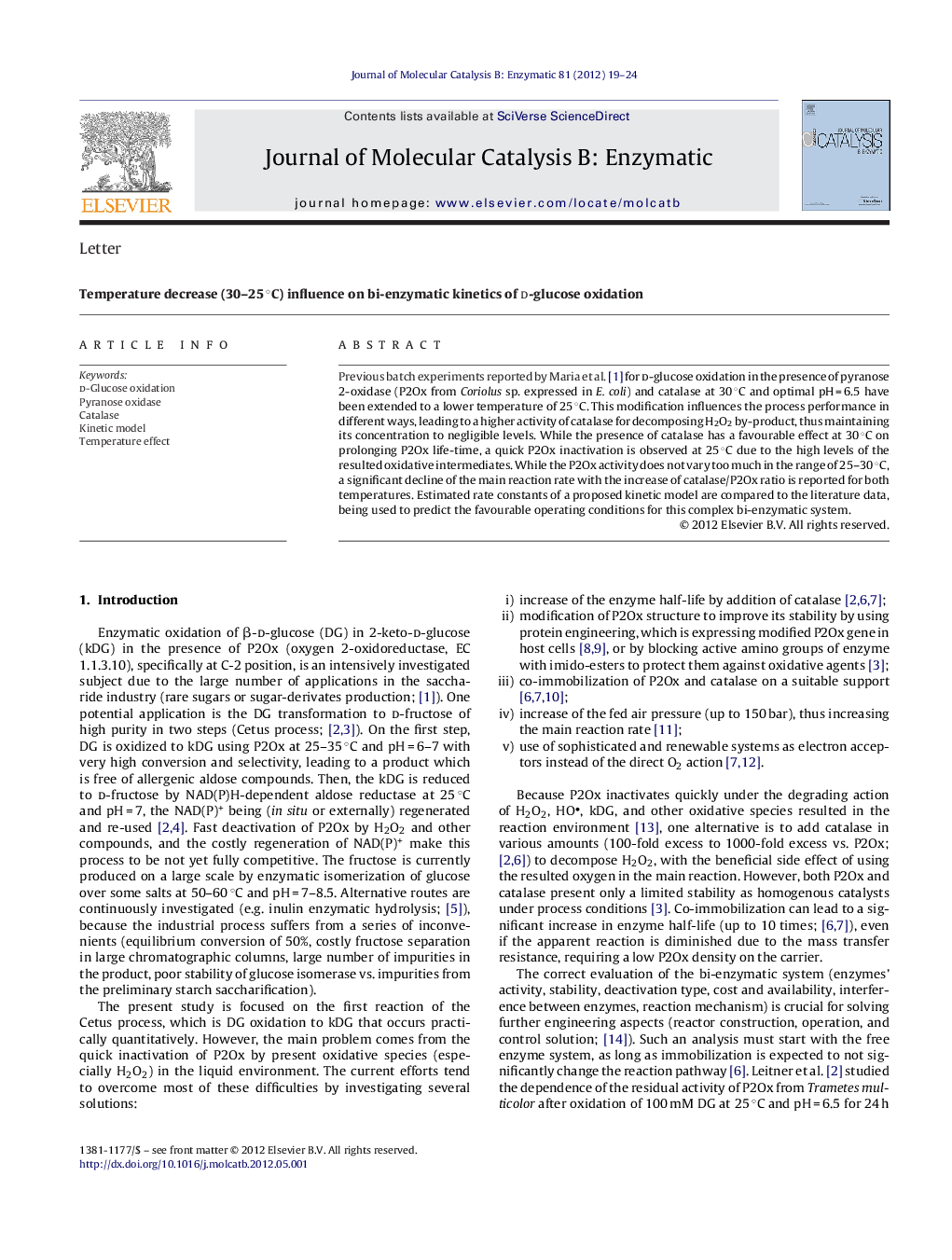| Article ID | Journal | Published Year | Pages | File Type |
|---|---|---|---|---|
| 69868 | Journal of Molecular Catalysis B: Enzymatic | 2012 | 6 Pages |
Previous batch experiments reported by Maria et al. [1] for d-glucose oxidation in the presence of pyranose 2-oxidase (P2Ox from Coriolus sp. expressed in E. coli) and catalase at 30 °C and optimal pH = 6.5 have been extended to a lower temperature of 25 °C. This modification influences the process performance in different ways, leading to a higher activity of catalase for decomposing H2O2 by-product, thus maintaining its concentration to negligible levels. While the presence of catalase has a favourable effect at 30 °C on prolonging P2Ox life-time, a quick P2Ox inactivation is observed at 25 °C due to the high levels of the resulted oxidative intermediates. While the P2Ox activity does not vary too much in the range of 25–30 °C, a significant decline of the main reaction rate with the increase of catalase/P2Ox ratio is reported for both temperatures. Estimated rate constants of a proposed kinetic model are compared to the literature data, being used to predict the favourable operating conditions for this complex bi-enzymatic system.
Graphical abstractFigure optionsDownload full-size imageDownload as PowerPoint slideHighlights► d-glucose is oxidized by using several pyranose-2-oxidase (P2Ox)/catalase ratios. ► Temperature decrease from 30 °C to 25 °C does not significantly reduce P2Ox activity. ► Catalase activity reaches its maximum at 25 °C, keeping very low levels of H2O2. ► P2Ox inactivates faster at 25 °C due to the high level of oxidative species resulted from H2O2 decomposition. ► Catalase/P2Ox ratio increase leads to the decrease of the main reaction rate.
